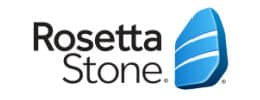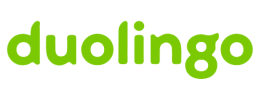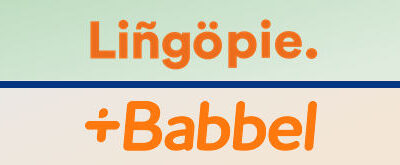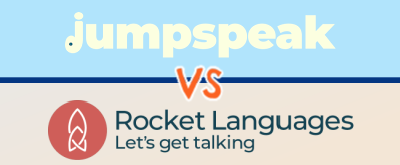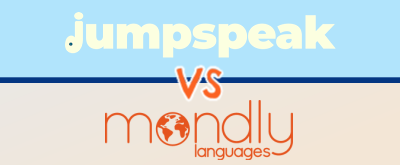In this article, we compare two extremely popular language learning platforms, Rosetta Stone and Duolingo. Rosetta Stone is known for its immersive approach and comprehensive lessons, while Duolingo is praised for its gamified learning experience and accessibility. We will examine their features, effectiveness, and user experience to determine which app is more suitable for different types of language learners.
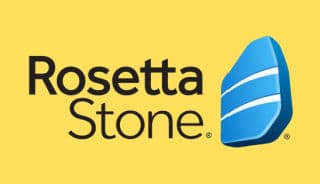
Discount: 60% OFF
Applied In Cart
|
$10-$15/mo |
Comprehensive language platform that features immersive, visual-based lessons. Rosetta Stone is the ideal app for visual learners. |
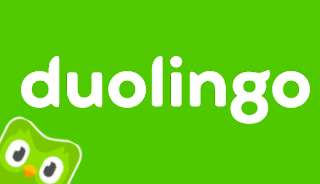
Free Version
Sign Up Today
|
$7/mo |
A fun and engaging language app that features a gamified learning experience, though its program overall is not as well-rounded as Rosetta Stone’s. |
Video: Duolingo or Rosetta Stone?
In the above video, team member Bianca delivers our thoughts on how these two popular apps stack up. Please keep reading for more info.
Editor’s Choice
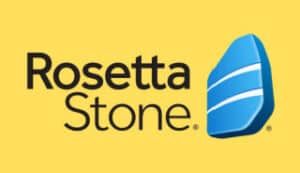
Rosetta Stone
- 20+ Languages
- Money Back Guarantee
Pros
- Effective learning method that emphasizes immersion
- Visually-appealing lesson format (perfect for visual learners)
- Top-notch speech recognition software
- Tons of bonus resources and tools
Cons
- No free version like Duolingo
- Lesson format is somewhat monotonous
Why Choose Rosetta Stone Over Duolingo
Before we dive into the strengths of the Rosetta Stone language program, first lets discuss how Rosetta Stone works and give you some insight into their learning method.
How Rosetta Stone Works
Each Rosetta Stone learning module features a core 30-minute lesson, which can be divided into three 10-minute mini-sessions. Following the core lesson, there are 3 to 15 supplemental drills, typically lasting 5 to 10 minutes each, covering aspects like pronunciation, listening, grammar, and writing.
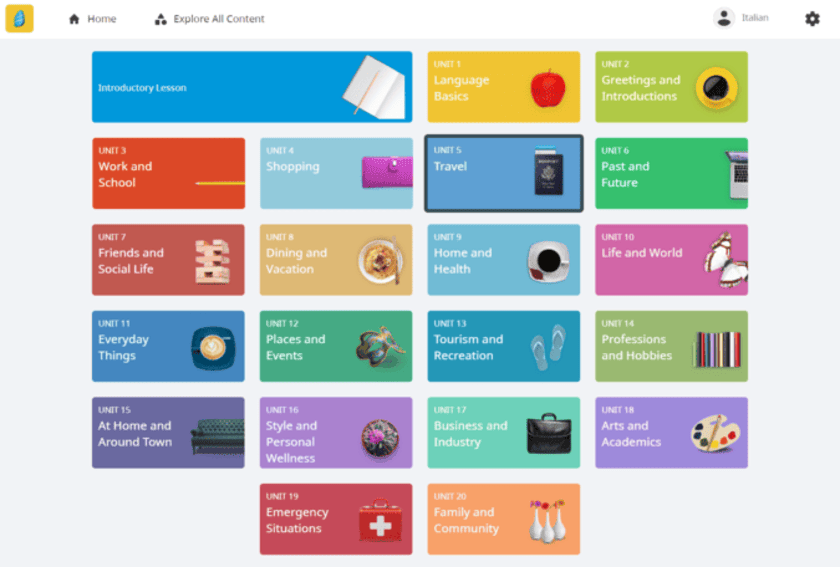
In terms of time commitment, completing a full lesson typically takes about an hour. The lessons primarily consist of images and audio, with learners listening to words or phrases, repeating them, and then matching them to corresponding images, resembling interactive flashcards.
For instance, if you’re learning Spanish, you might hear a native speaker say “tengo una camioneta roja,” and then select an image of a man driving a red truck. This method aims to develop language skills through visual cues, intuition, and inference, starting with simple one- or two-word phrases and progressing to more complex sentences as learners advance.
Good Fit For Visual Learners
Rosetta Stone’s emphasis on imagery makes it particularly effective for visual learners. For those who learn best by seeing and understanding the spelling of words or by mentally connecting words to specific images or scenes, Rosetta Stone is the preferred choice over Duolingo, regardless of whether you want to learn Italian or German, for example (same story with Busuu).
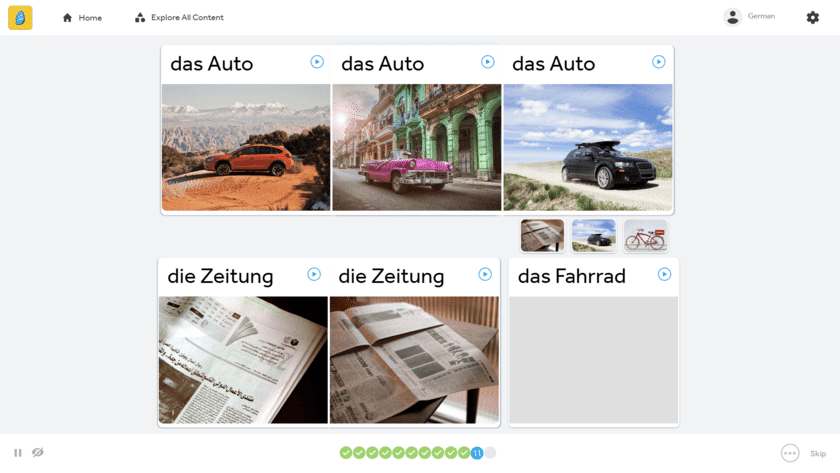
Visual learners often recall words by visualizing either the spelling or the corresponding image, making Rosetta Stone’s approach a natural fit for their learning style. Alternatively, if you prefer learning via video, Lingopie is an excellent choice.
Immersive Learning Environment
I’m a big fan of Rosetta Stone’s immersive learning method. While it can be challenging, especially in the early stages, as it eliminates English as a crutch, I believe it accelerates language acquisition by encouraging a deeper understanding of the language.
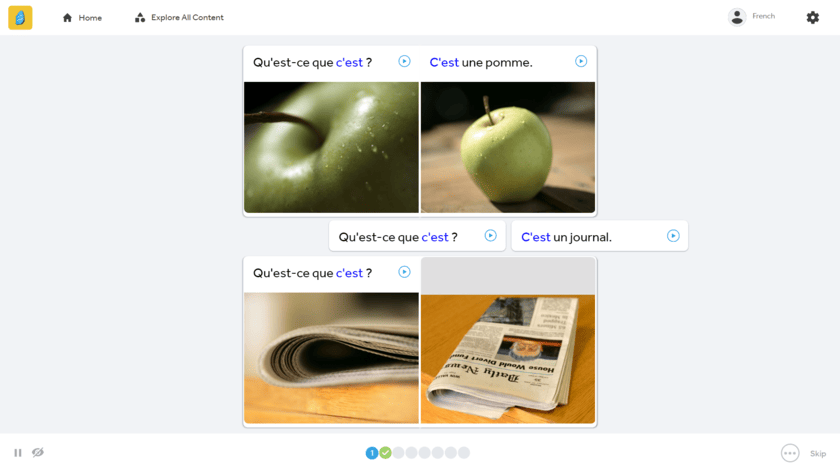
Ultimately, immersion forces learners to grasp the new language naturally through context and reasoning, rather than relying solely on memorization, which we find to be highly effective.
Accurate Speech Software
Rosetta Stone’s TruAccent voice recognition technology is a standout feature of the program, developed over years and patented by the company. During lessons, TruAccent listens as you repeat words or phrases, fill in blanks, or describe images, prompting you to correct any mispronunciations until you get them right.
While not a perfect system and no substitute for speaking with a native speaker, TruAccent is highly effective, comparable to Babbel’s technology.
Duolingo also utilizes voice recognition technology in its verbal drills, which is commendable, but Rosetta Stone’s TruAccent stands out for its accuracy and effectiveness, offering pronunciation feedback that closely resembles that of a real person.
Bonus Resources
In comparison to Duolingo, Rosetta Stone offers a much wider array of supplementary resources for its users. While Duolingo provides some decent resources, I particularly appreciate the abundance of extras included in the Rosetta Stone subscription.
One notable resource is the on-demand videos, which offer a deeper dive into language concepts and local culture. For example, if you’re learning Italian, there’s a video series on Italian slang that could be incredibly useful for a trip to Italy.
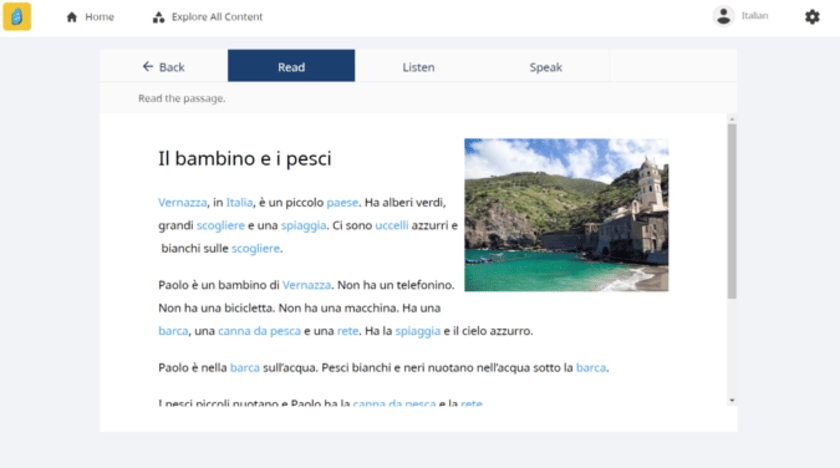
Additionally, Rosetta Stone includes short stories to help improve reading and listening skills, phrasebooks with voice recognition technology for pronunciation practice, and an Alphabet tool to enhance writing fluency and understanding of the target language.
Overall, Rosetta Stone’s bonus tools and resources surpass those of Duolingo.
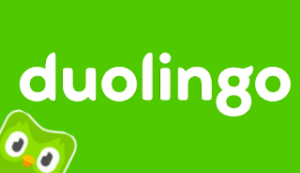
Duolingo
- 40+ Languages
- Free Version Available
Pros
- More affordable than Rosetta Stone
- Fast, fun lesson format
- Duolingo does a great job of gamifying the language experience
- Regular review sessions help with material retention
Cons
- Free version is quite limited
- Limited grammar instruction
- Unnatural language and phrases within lessons
Why Choose Duolingo Over Rosetta Stone
Now that we have discussed what Rosetta Stone is all about, let’s turn the tables and discuss how Duolingo works, and why you may want to consider using their app to learn a new language.
How Duolingo Works
Duolingo’s learning path consists of hundreds of units, each containing several stepping stones covering skills, concepts, and thematic topics like emotions, travel, and present tense. Each stepping stone is further divided into several short lessons, typically taking 5 to 10 minutes to complete.
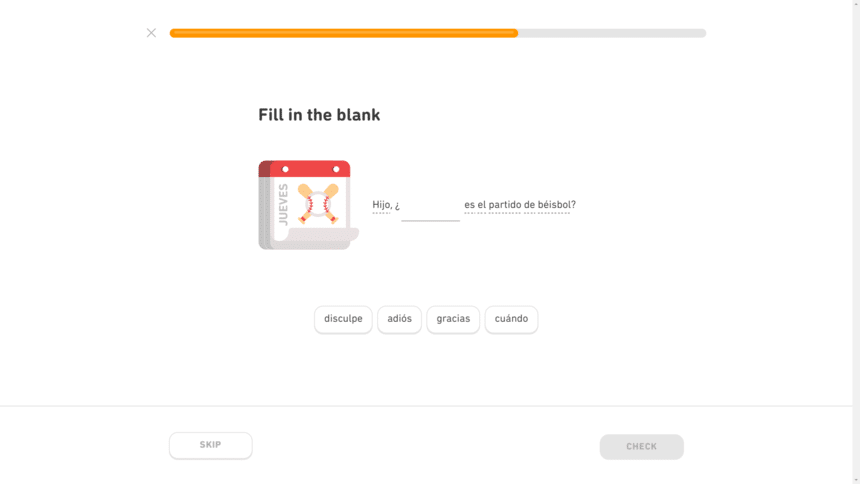
You progress through the units in a predetermined order, and new units only unlock once you’ve completed the previous one.
However, with a paid subscription, you can test out of units by passing a short quiz, allowing you to advance faster. As you complete lessons, you earn experience points (XP) and lingots, which can be used to purchase additional features in the Duolingo store, adding a gamified element to your language learning journey.
Duolingo Is Free
The standout feature of Duolingo is its free plan, which makes language learning accessible to everyone, especially those on a tight budget.
However, the free version has its drawbacks. It includes ads, limits the number of incorrect answers (hearts) you can make per day, and restricts the number of times you can “test out” of topics.
These limitations can be frustrating and discouraging for users. Overall, while Duolingo’s free app is a great starting point, it does have its shortcomings compared to the paid version.
Diverse Lessons
Duolingo stands out for its lesson variety and interactive approach, presenting content in multiple ways within a short timeframe (similar to Mondly). This variety helps maintain engagement and attention.
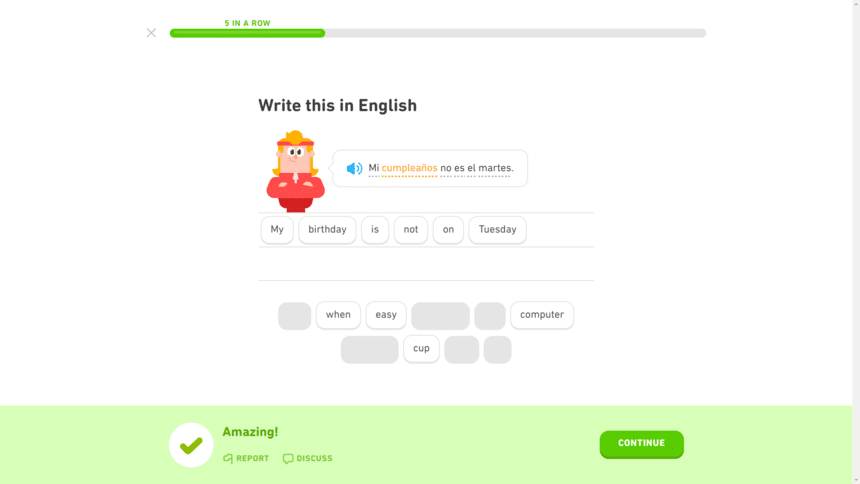
In contrast, Rosetta Stone’s exercises, such as matching words to pictures, can feel repetitive. Duolingo’s shorter lessons are also more suited for busy professionals or parents with limited time.
Overall, Duolingo’s swift and interactive lessons are a notable perk of the course (like with Mango Languages).
Fun Learning Experience
Duolingo’s gamification of the learning experience is a standout feature. You earn XP points and lingots as you complete lessons, which can be used to track progress and purchase additional features.
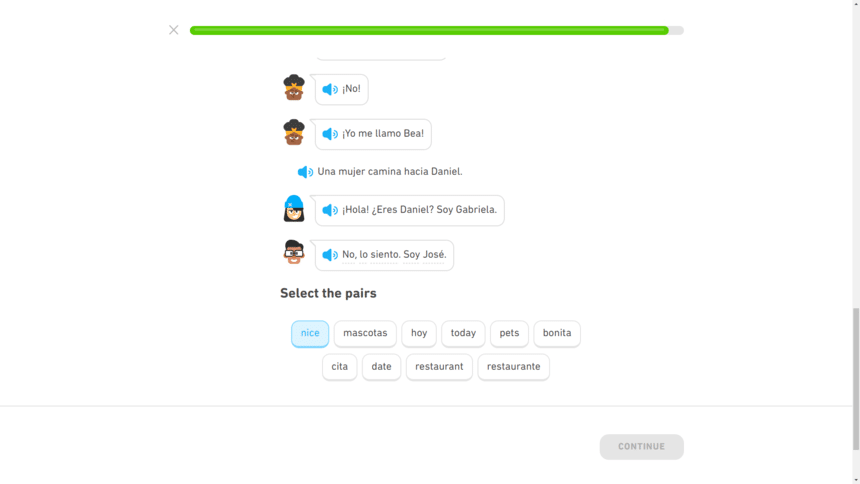
The app and digital platform are well-designed, with a logical layout, fun visuals, and features like a daily goal tracker and scoreboard for competition. This creates a community and game-like environment that enhances the overall learning experience.
Verdict: Which Language App Is More Effective?
In my opinion, Rosetta Stone emerges as the better overall package. However, Duolingo has its merits, particularly for those seeking a free resource for casual language learning or review.
If you’re a visual learner or seriously committed to learning a new language, Rosetta Stone is the superior choice. Their comprehensive lessons, TruAccent voice recognition technology, and abundance of extra resources offer a more robust learning experience. Additionally, Rosetta Stone provides more flexibility in its program.
Overall, I recommend Rosetta Stone for those dedicated to achieving an intermediate level in a new language. However, it’s worth exploring reviews of Babbel and Pimsleur, as they may better suit your learning style and preferences.
👉Read Next: Duolingo vs Rocket Languages
Rosetta Stone offers a more immersive, comprehensive approach to language learning, with longer, more detailed lessons and advanced speech recognition technology. In contrast, Duolingo provides a gamified, free platform with shorter, varied lessons, making it ideal for casual learners or those on a budget.
Rosetta Stone’s immersive approach, longer and more comprehensive lessons, and advanced speech recognition technology make it more effective for serious language learners. The program’s focus on visual learning and comprehensive curriculum provides a more in-depth language learning experience compared to Duolingo’s more casual, gamified approach.

